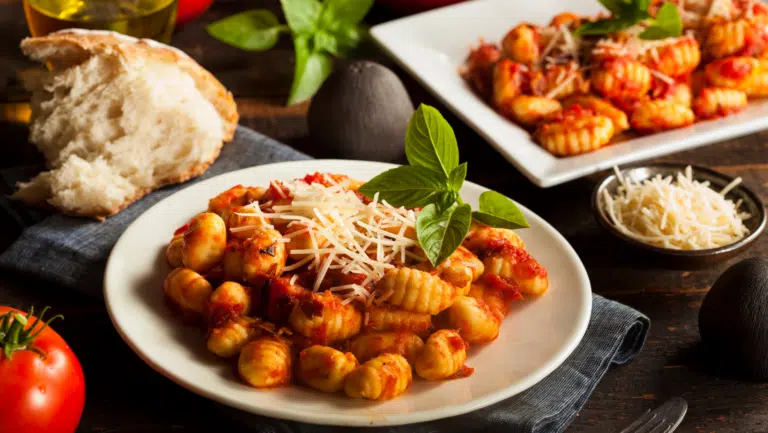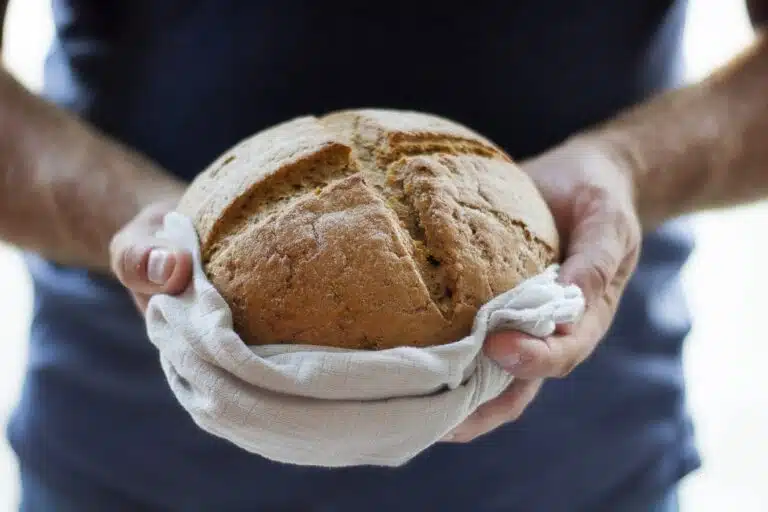
10 Tips for Eating out on a Low FODMAP Diet
10 Tips for Eating out on a Low FODMAP Diet
- filed under: All, FODMAPs & Food Intolerance
Good morning to everyone, except those who can eat out without the fear of inflicting all hell in your gut for the next 24 hours!
Living with IBS is so much more than the odd belly ache or run to the toilet. IBS impacts all areas of your life. Including leaving you with an impending sense of doom at simple the idea of heading out to eat. We get you, we’ve been there too! But, the whole point of a low FODMAP diet is to improve your quality of life and eating out with friends and family is part of this.
The good news is that following a low FODMAP diet is not a game of perfect and you don’t have to follow it perfectly at every meal and snack to get great results. Accidentally (or intentionally) eating a high FODMAP food may cause symptoms, but these will pass and you won’t damage your body or upset your progress. If you do find yourself in the unfortunate situation of stirring up that gut monster, treat the symptoms then just dust yourself off and carry on.
Of course, this knowledge doesn’t always help calm the anxiety or relax the gut brain axis, so today we have 10 tips to help you eat out on a low FODMAP diet, enjoy your meal and minimise any potential undesirable outcomes.
1. Do your research
Jump online and have a look at the menu before you go. Do they have any options that are already low FODMAP or with a few minor tweaks can be modified to low FODMAP? If you’re unsure phone ahead to get a sense of what they can do and what meals are easy to modify. For example, do they do fish or steak that can be put to the side without a marinade or seasoning or a chicken salad that can be dressed with olive oil and balsamic?
2. Focus on your main triggers
It’s good to keep in mind that it’s a “Low” FODMAP diet and not a “No” FODMAP diet. Many foods are low FODMAP in smaller serves and we don’t need to worry about cross contamination. If a food can be picked out and left on the side of the plate, that’s perfectly fine and still considered within the realms of a low FODMAP diet. Additionally, Monash cut offs are very conservative to allow space for FODMAP stacking, and it’s very unlikely that one extra bite of broccoli is going to be a disaster.
With this in mind, try to get your list of “no goes” down to a few foods that can’t be picked out. For many this means onion and garlic. If you can do this, the kitchen is much less likely to feel overwhelmed and be able to accommodate with a delicious meal.
3. Go back to baseline
FODMAP has a threshold component and symptoms only occur when you go over your individual threshold. You can use this to your advantage by being a little stricter than normal with meals you eat earlier in the day. This will take you as close to baseline and as far away from your threshold as possible. Ultimately, giving you more room to move when you get to the restaurant.
4. Snack before you go
Always have a small snack before leaving home. This way you won’t get to the restaurant starving and want to just devour everything that looks remotely appetising. This also means you are more likely to be satisfied with a smaller meal, reducing the chance of overdoing a higher FODMAP ingredient.
5. Calm your gut brain axis
IBS is all about the sensitivity of the nerves in your gut and your gut brain axis. The calmer you feel the calmer the your brain axis will be and the less likely your gut nerves are to respond to a higher FODMAP food. Do something relaxing during the day, use mindfulness and any other calming techniques you have up your sleeve. Plan out how you will respond to that annoying voice in your head that screams doom and gloom when you look at your plate. Remind yourself that how you think about your symptoms will influence how bad they are and how well you cope with them.
6. Choose wisely
When choosing from the menu look for dishes that are not overly saucy like soups, casseroles or risottos. The sauces are often prepared ahead of time and can’t be made without onion or garlic at short notice.
Options that are easier to make low FODMAP include:
- Grilled meat, fish, poultry served with salad and chips with dressings or sauces on the side
- Salads that can be customized with simple olive oil, vinegar or lemon juice dressings
- Eggs on sourdough toast or omelettes if you’re out for lunch or breakfast
- Opt for condiments like simple olive oil & vinegar dressings, mustard, mayo or tomato sauce which all have low FODMAP serves
Take caution with:
- Sauces and dressings which often have onion and garlic.
- Soups, pastas and risottos which are often pre-prepared and difficult to modify. These are almost certain to contain onion and garlic
- Mexican-style dishes that contain beans, onion or garlic
- Mince meat may be prepared with garlic and onion
- Gluten-free menu options will remove wheat but may still contain high FODMAP ingredients like onion or garlic. Sometimes it’s easier to stick with the wheat ingredient and stick to a low FODMAP serve e.g. panko crumbs are low FODMAP at a full cup, so crumbed chicken or fish are likely below cut offs
7. Chew well and enjoy the company
Digestion begins in the mouth! Enzymes in your saliva start the breakdown of starchy foods. So chew well, eat mindfully and enjoy thew food and the company. Eating slowly has been shown to result in smaller but more satisfying serves while eating fast and talking while you eat often results in eating beyond satisfaction and more swallowed air both of which can contribute to bloating and make you feel icky.
8. Watch the alcohol
Alcohol and fizzy drinks are gut irritants which can mean a gut that is more susceptible to FODMAP triggers. If you’ve ever overdone the alcohol you will also know the calling of that late night kebab, which is anything but low FODMAP. So have a drink, but sip it slowly, savour it and alternate with plain water.
9. Return to your baseline diet
After the meal, return to your baseline diet again. This will help you get back under that threshold as quickly as possible, keeping any symptoms to a minimum or even avoiding them altogether.
10. Manage the overflow
If you are unfortunate and you stir up the gut monster, manage the symptoms. If that means a day off from the world, go for it. Tricks like heat packs, walking outside, stretching or yoga and peppermint tea are all great for bloating and gas. Over the counter laxatives or gastro-stop can help with any bowel changes. If you’re unsure which are best for you and your symptoms, your doctor or dietitian can discuss options.
Final thoughts
We see lots of people get away with a meal out without any symptoms at all and there is no reason this can’t be you too. It does happen, and the more you do it, the better you get at it. So take a deep breath and say YES to that dinner invite!
If you’re unsure or feel like everything is triggering your symptoms, then Everyday Nutrition are here to help. We love food and we love living life. Part of this means finding the optimal balance of food variety and symptom management that gives you the best quality of life. In most cases, the more you pinpoint your triggers, the easier this gets. Our team of expert FODMAP dietitians are ready and waiting to support you. Book an appointment here.
TAGS:
SHARE THIS POST

Meet Joanna
PASSIONATE IN DIGESTIVE HEALTH
grab your freebie
Week 1 - Low FODMAP Menu






One Comment